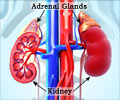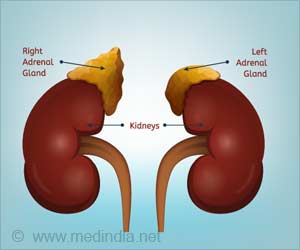- Congenital Adrenal Hyperplasia - Genetic and Rare Diseases Information Center (GARD), National Center for Advancing Translational Sciences, National Institutes of Health (NIH), USA - (https://rarediseases.info.nih.gov/diseases/1467/congenital-adrenal-hyperplasia)
- Merke D, Kabbani M. Congenital adrenal hyperplasia: epidemiology, management and practical drug treatment. Paediatr Drugs. 2001; 3(8): 599-611. PMID: 11577925. - (https://www.ncbi.nlm.nih.gov/pubmed/11577925)
What is Congenital Adrenal Hyperplasia or Adrenogenital Syndrome?
Congenital adrenal hyperplasia (CAH), is a group of inherited disorders that affect the adrenal glands. These glands are small pyramid shaped structures that sit on top of each kidney and secrete various hormones needed by the body for proper functioning. These disorders are genetic (called autosomal recessive) in nature and are transmitted through families from one generation to another. However, for the disease to develop in an autosomal recessive condition, two copies of an abnormal gene must be present.
The mutations (alterations) in genes that help the formation of enzymes involved in the biosynthesis of several steroid hormones, including mineralocorticoids, glucocorticoids and androgens (male sex hormones such as testosterone) are altered.
How is Congenital Adrenal Hyperplasia (CAH) Inherited?
The parents of the affected individual each carry one copy of the mutated gene and are said to be carriers, since they carry the disease, but don’t show any symptoms and signs.
As explained earlier, all types of CAH follow an autosomal recessive pattern of inheritance. This means that in order to be affected with the condition, the person must have mutations in both copies of the abnormal gene in each cell. It should be noted that when two carriers of an autosomal recessive condition have children, each child will have a 25% (1 in 4) risk of having the condition, 50% (1 in 2) risk of being carriers, while a 25% chance of not having the condition nor being carriers.
What is the Incidence of Congenital Adrenal Hyperplasia?
The classic or severe form of CAH occurs in 1:15000 births worldwide.
The non-classic or mild form occurs in approximately 1:1000 births worldwide and can be as high as 1:20 births in certain ethnic groups.










